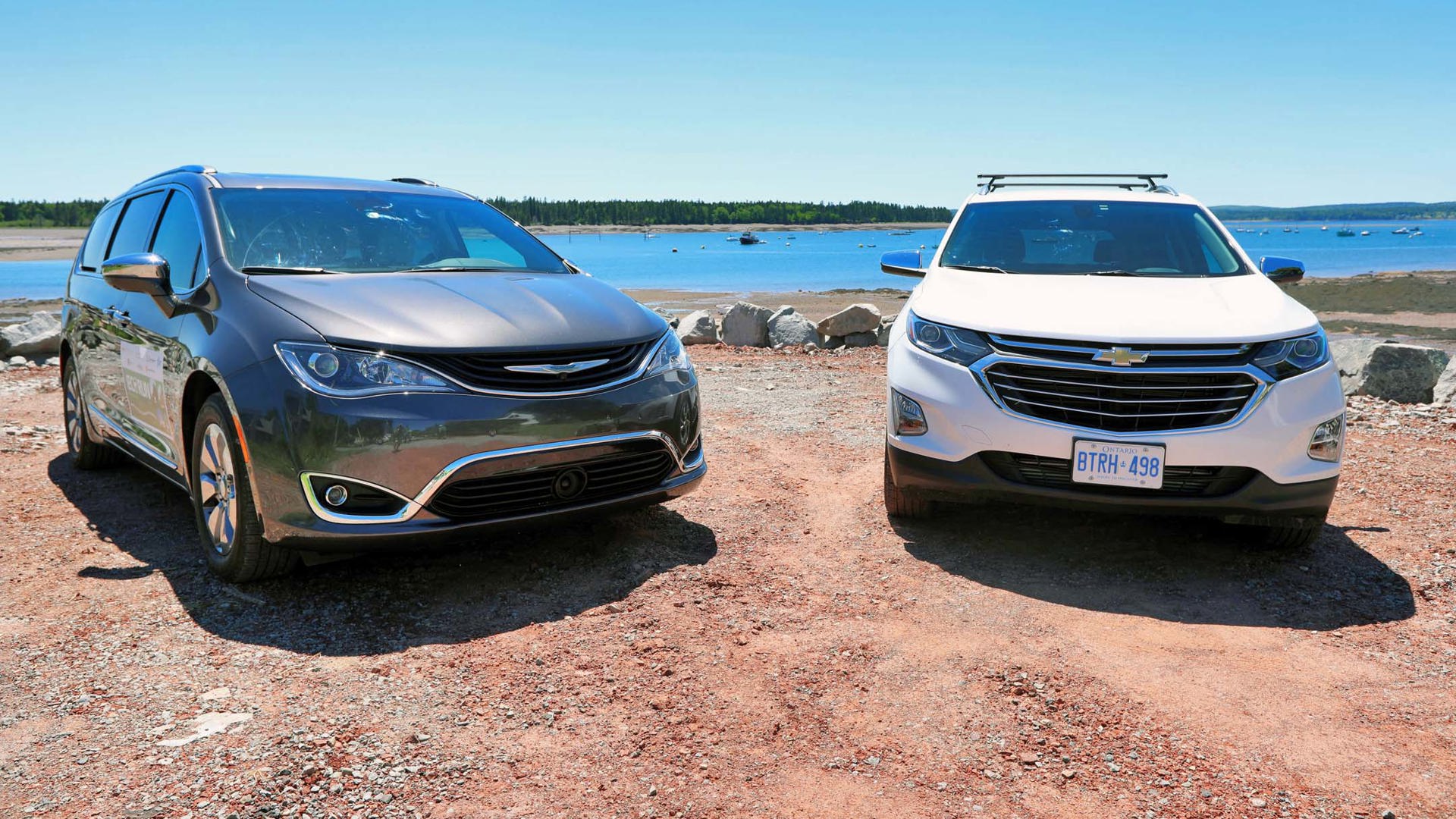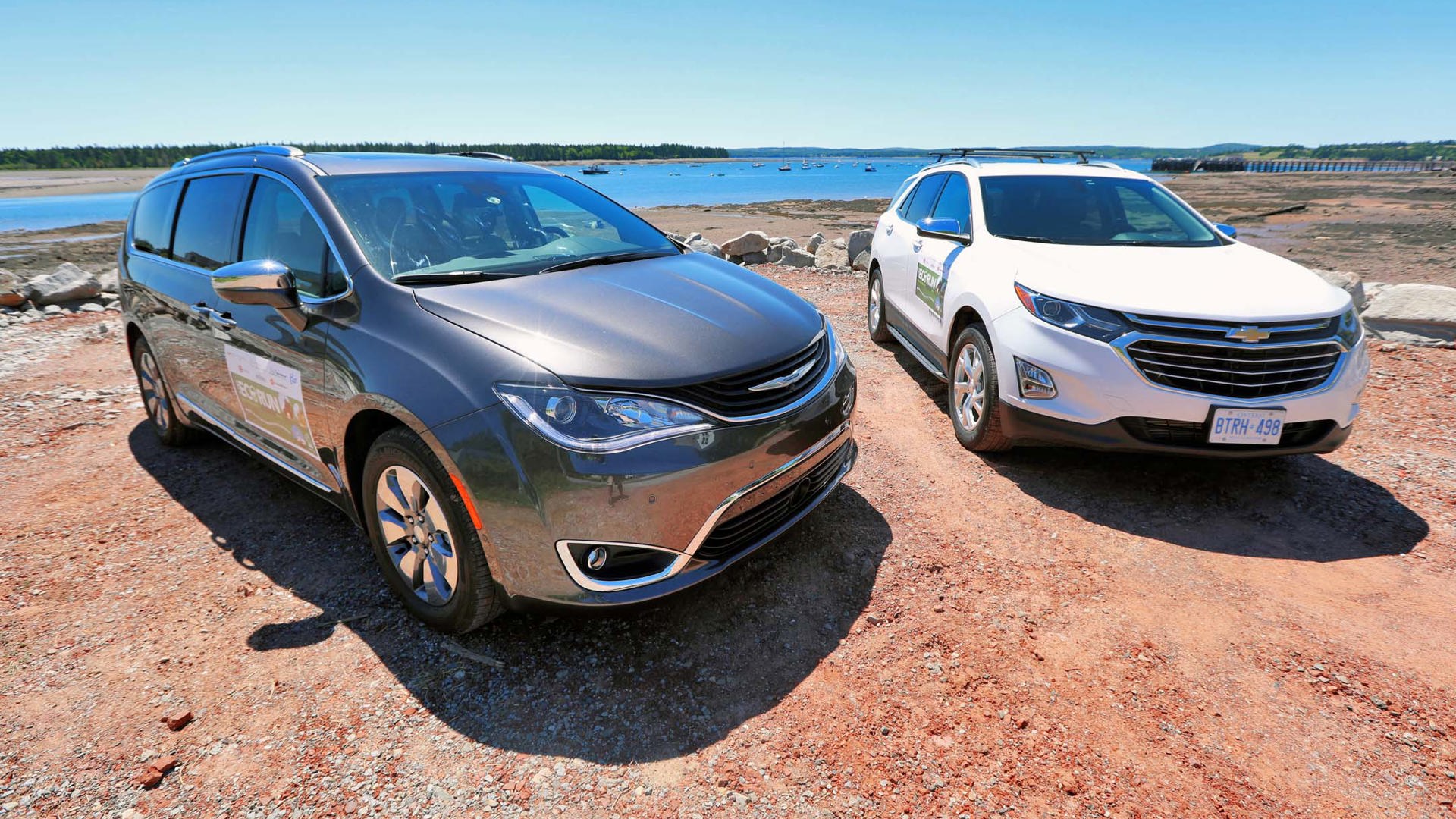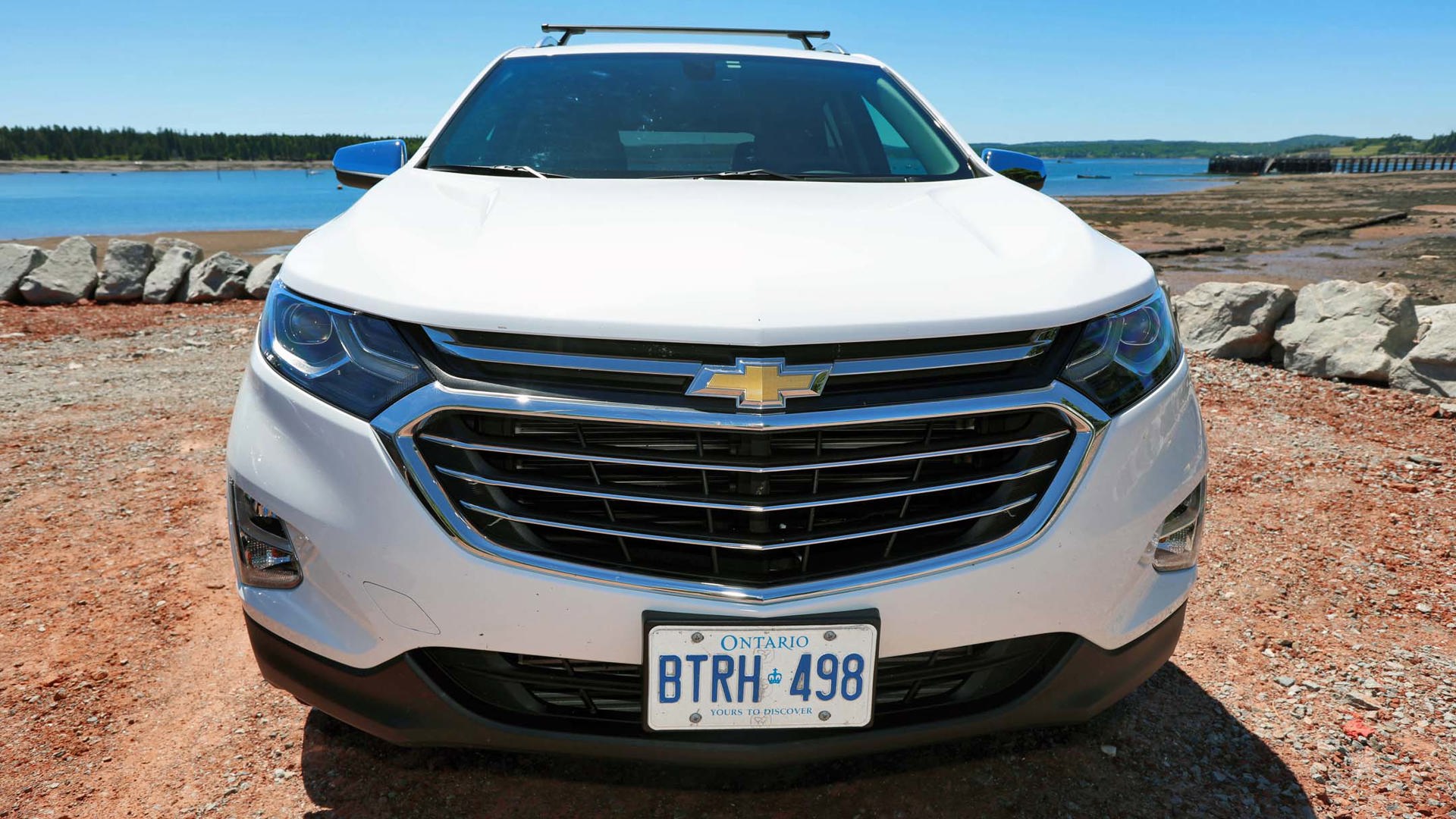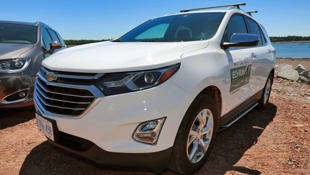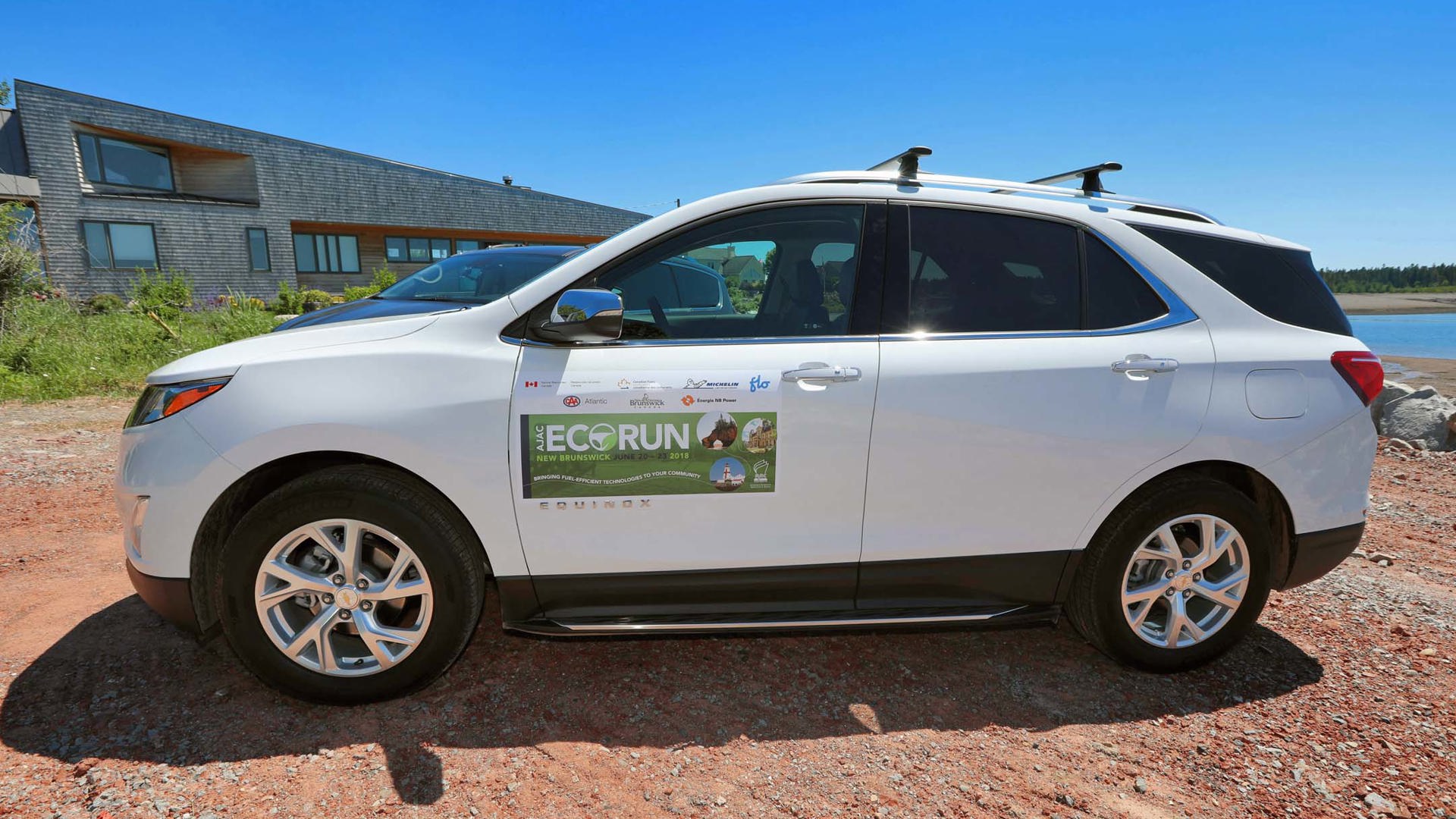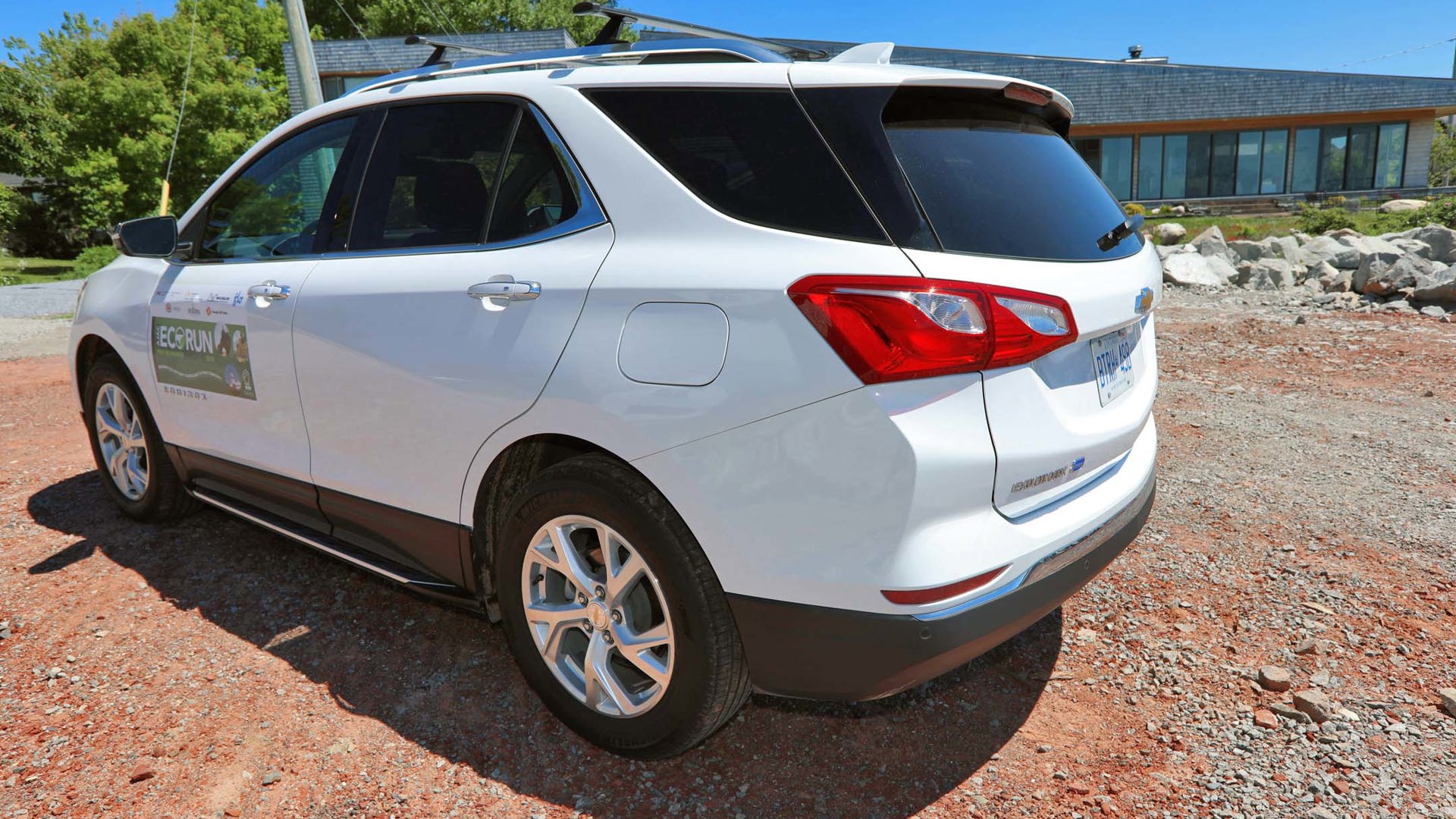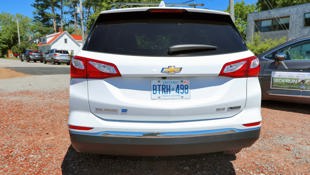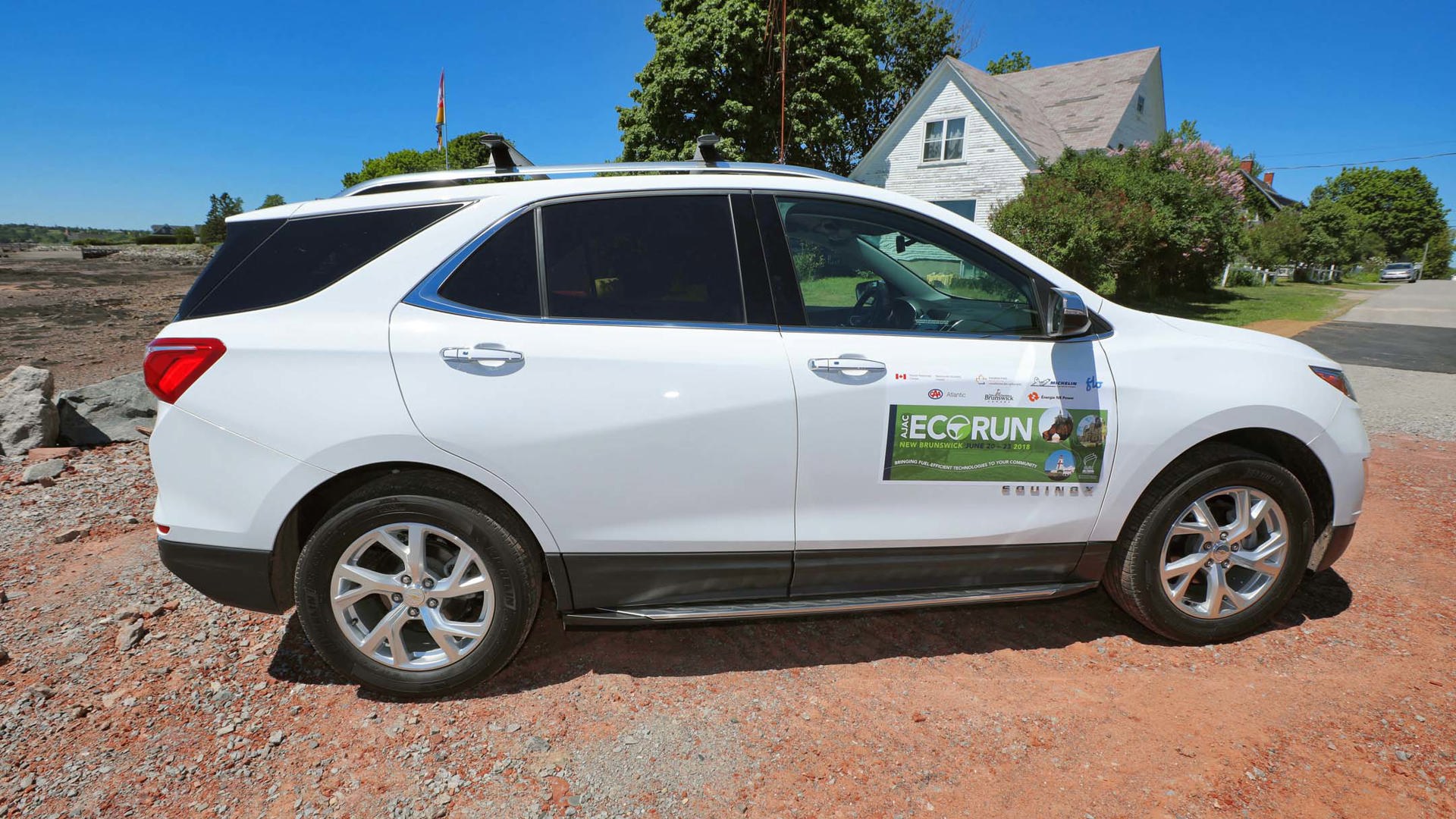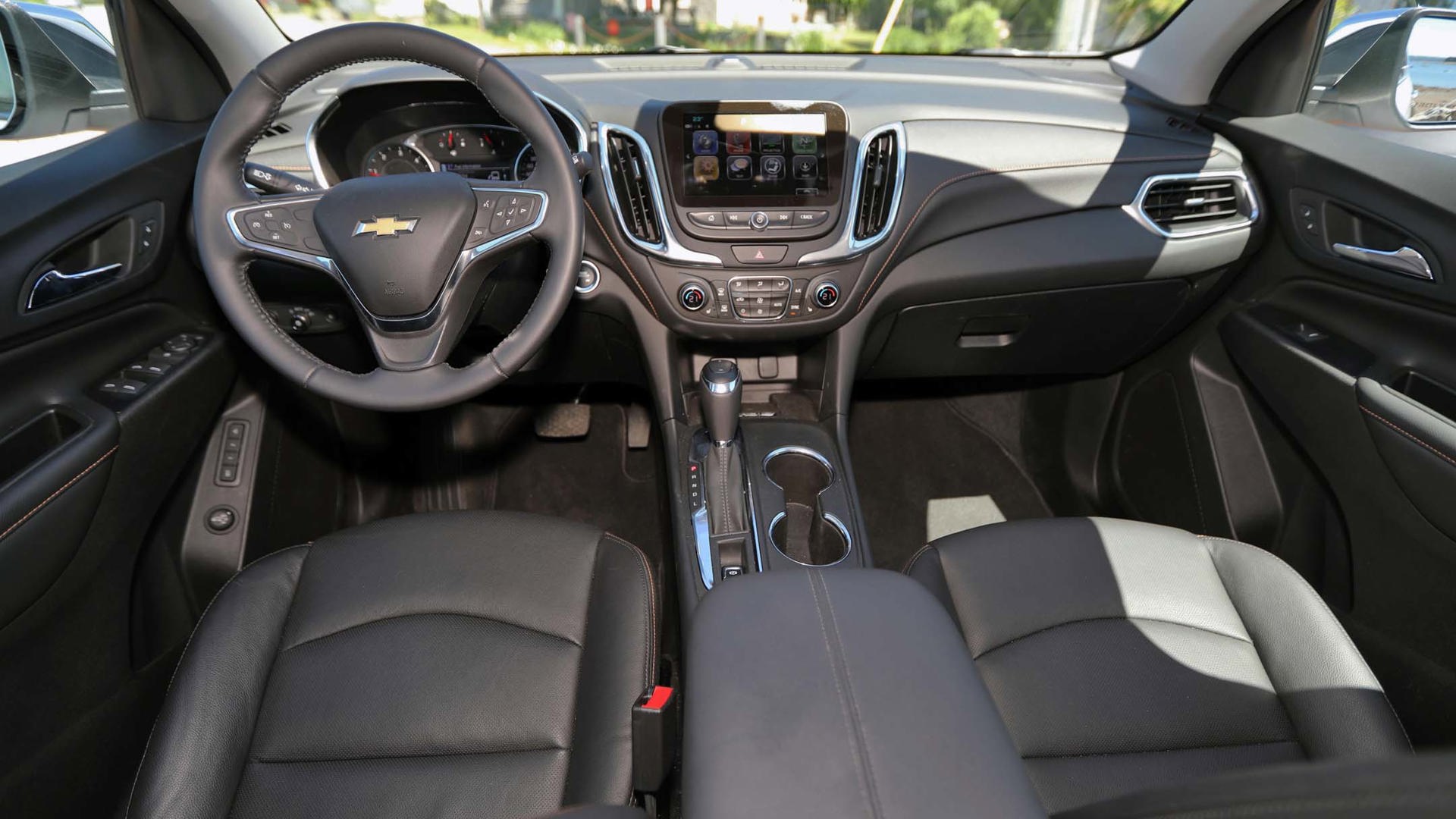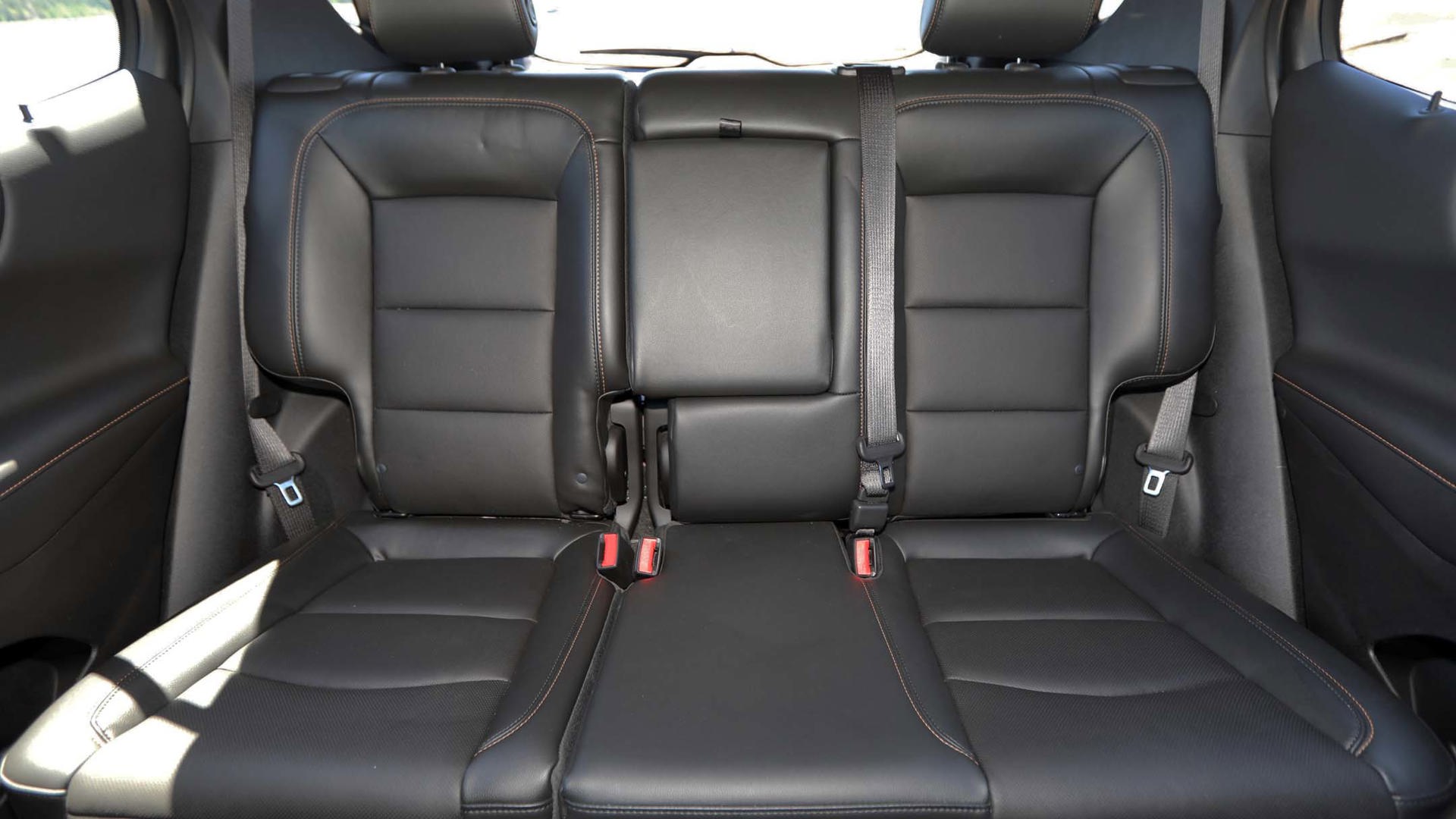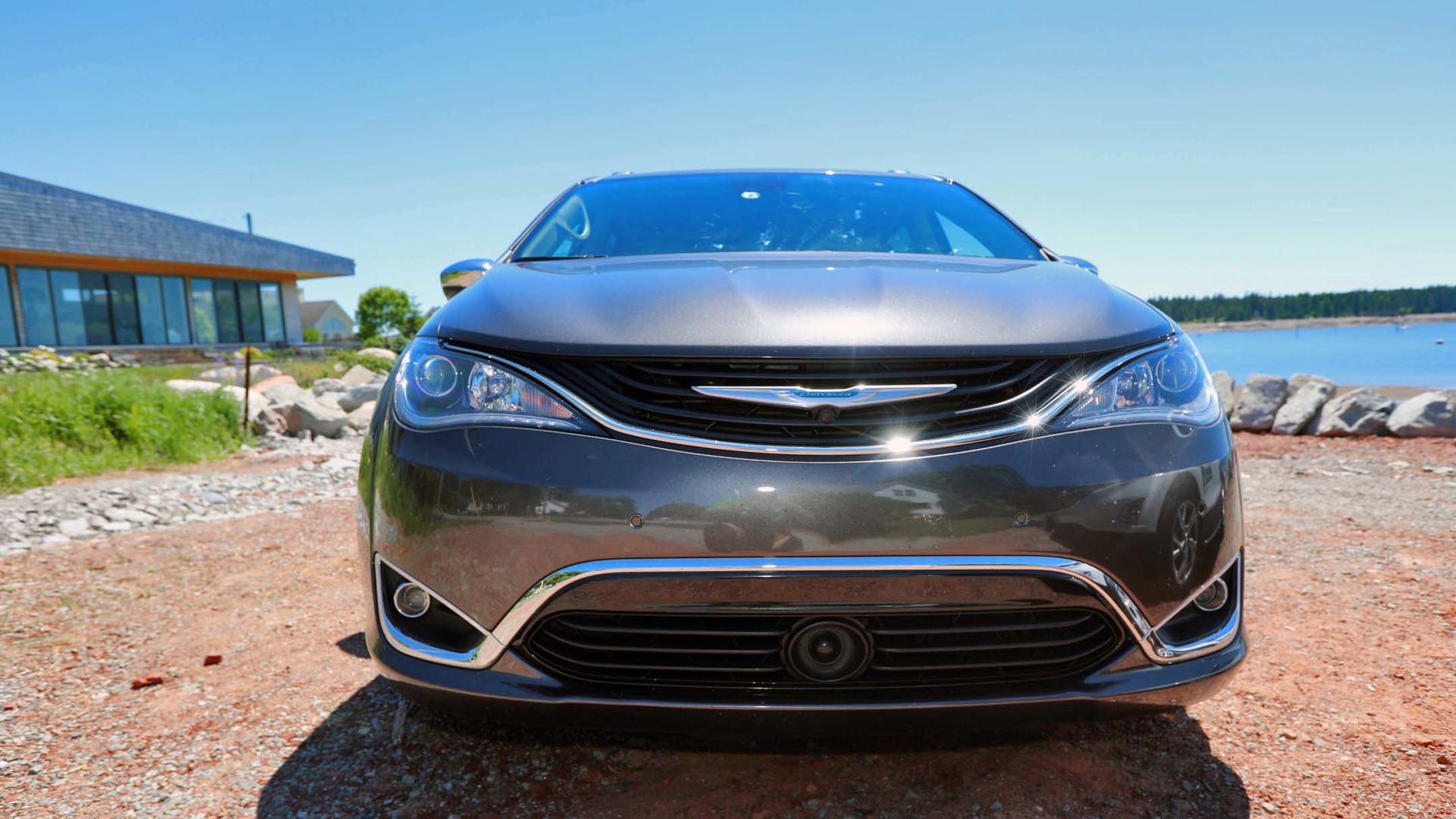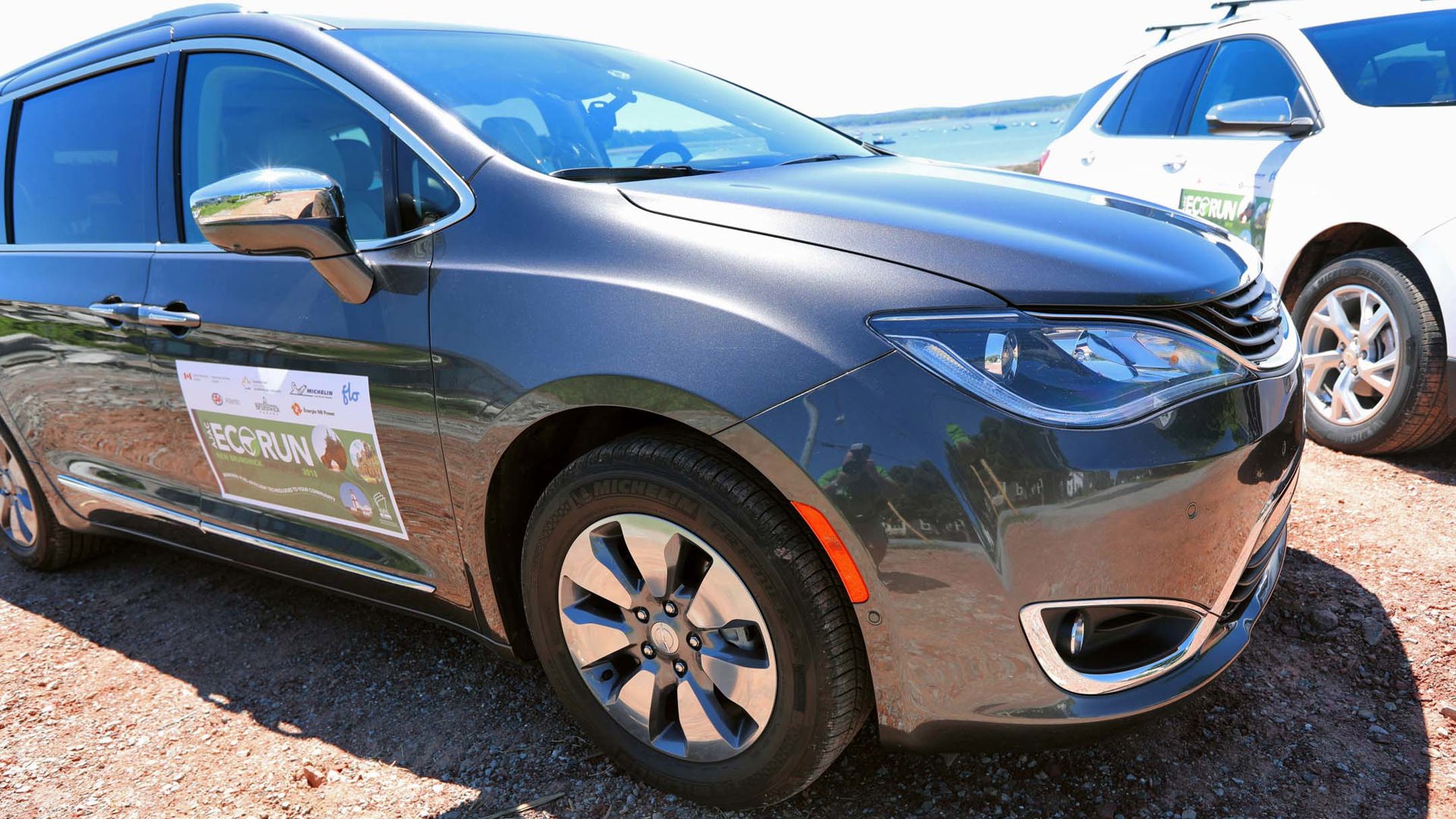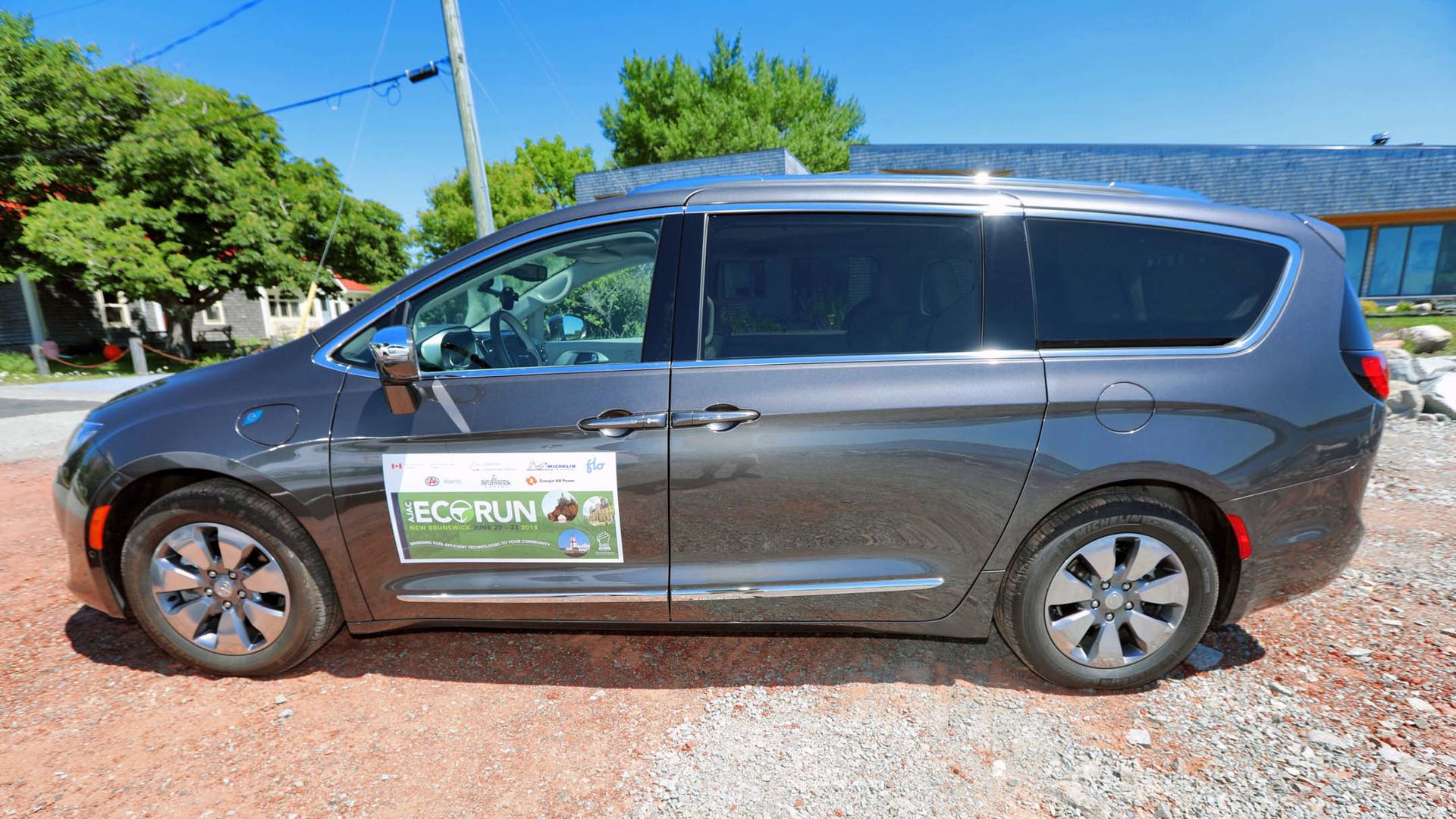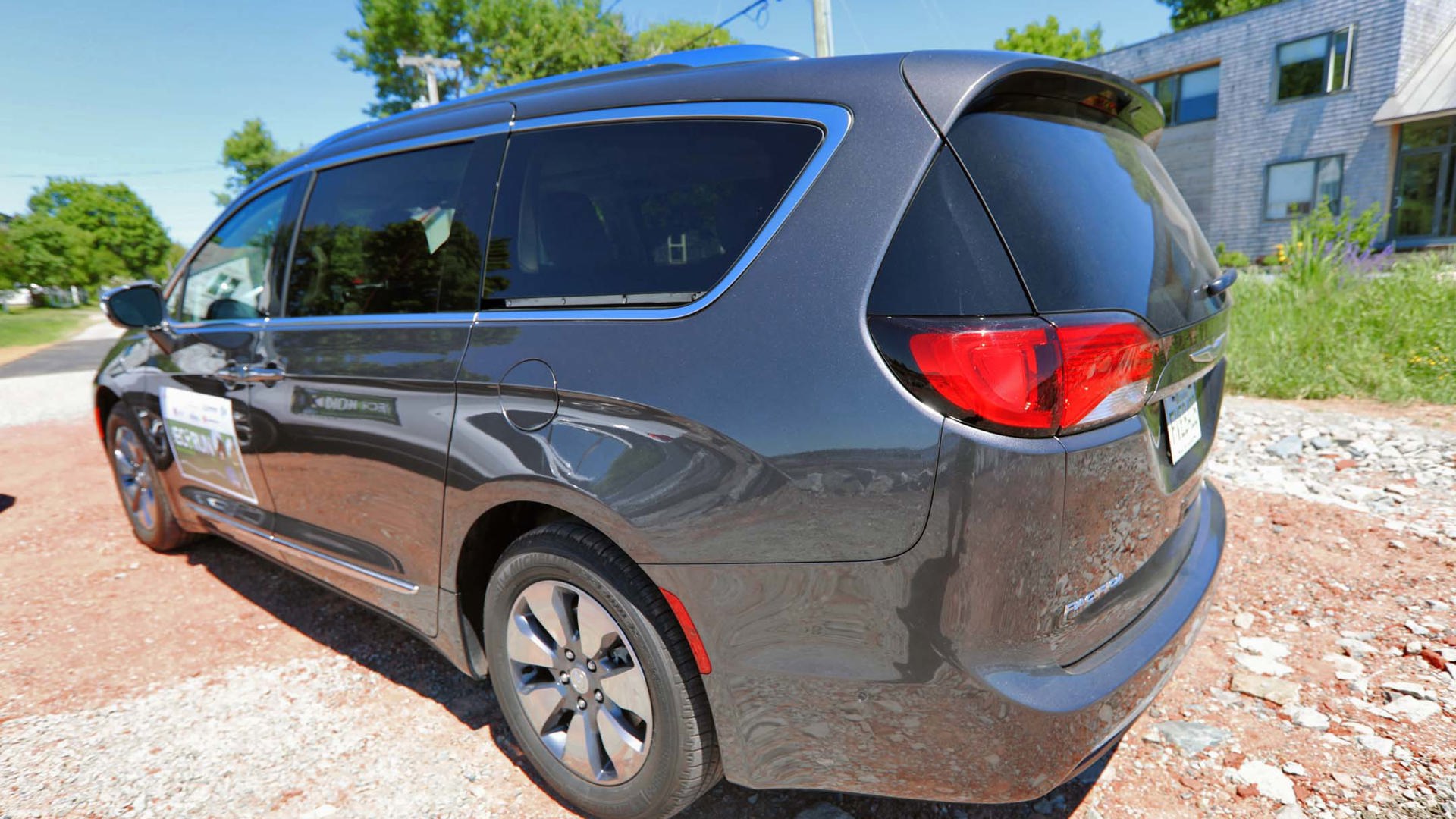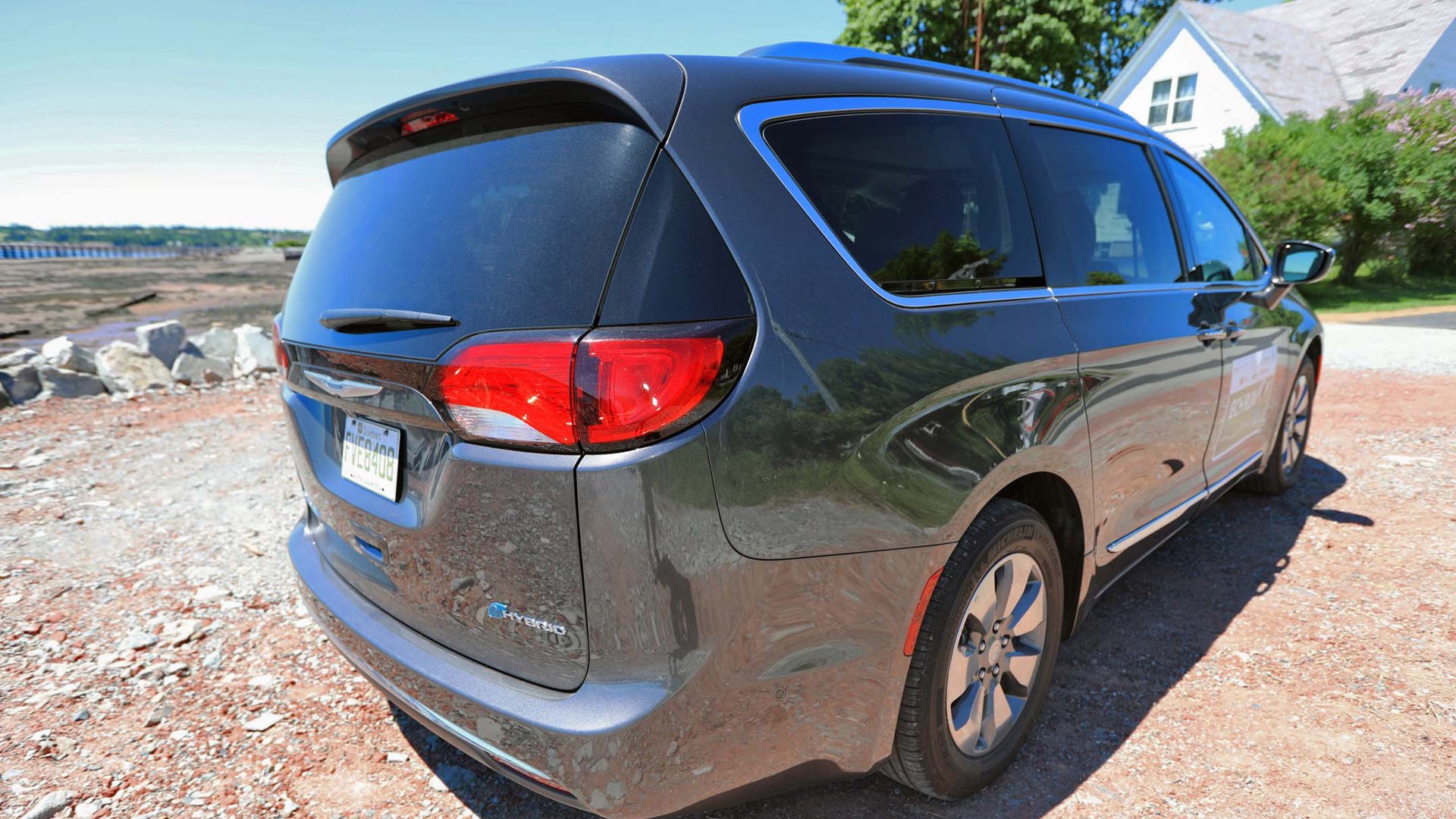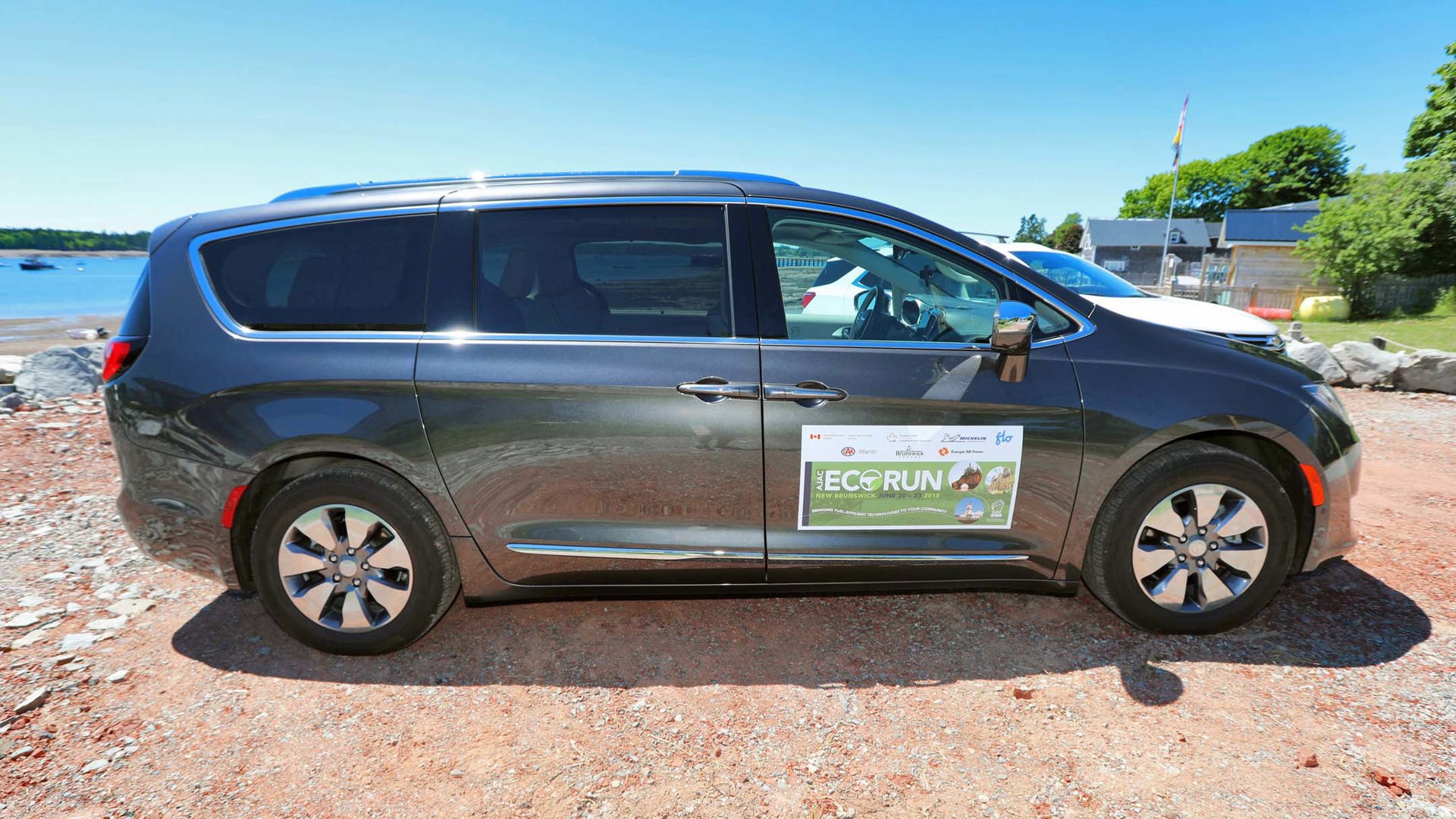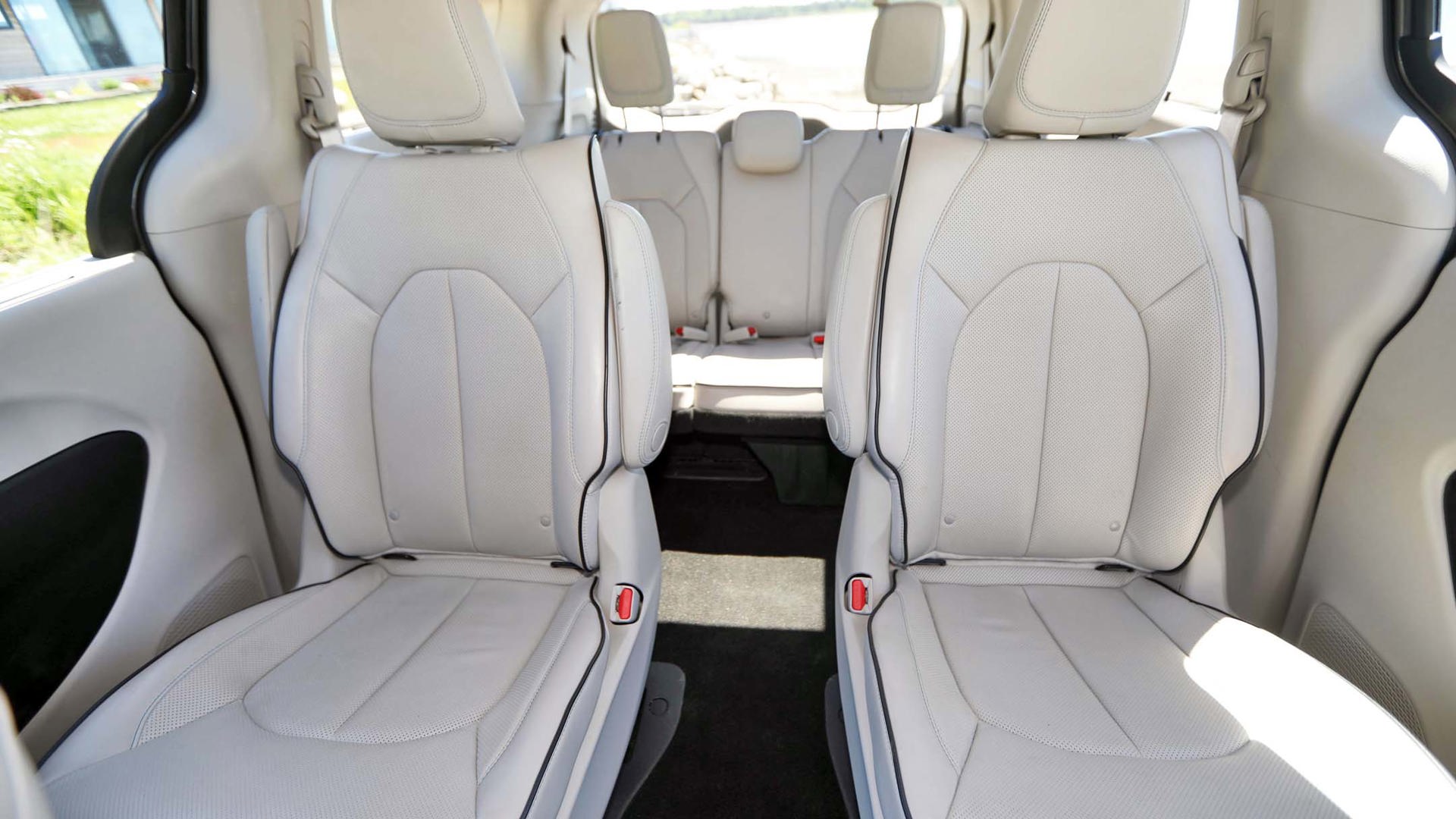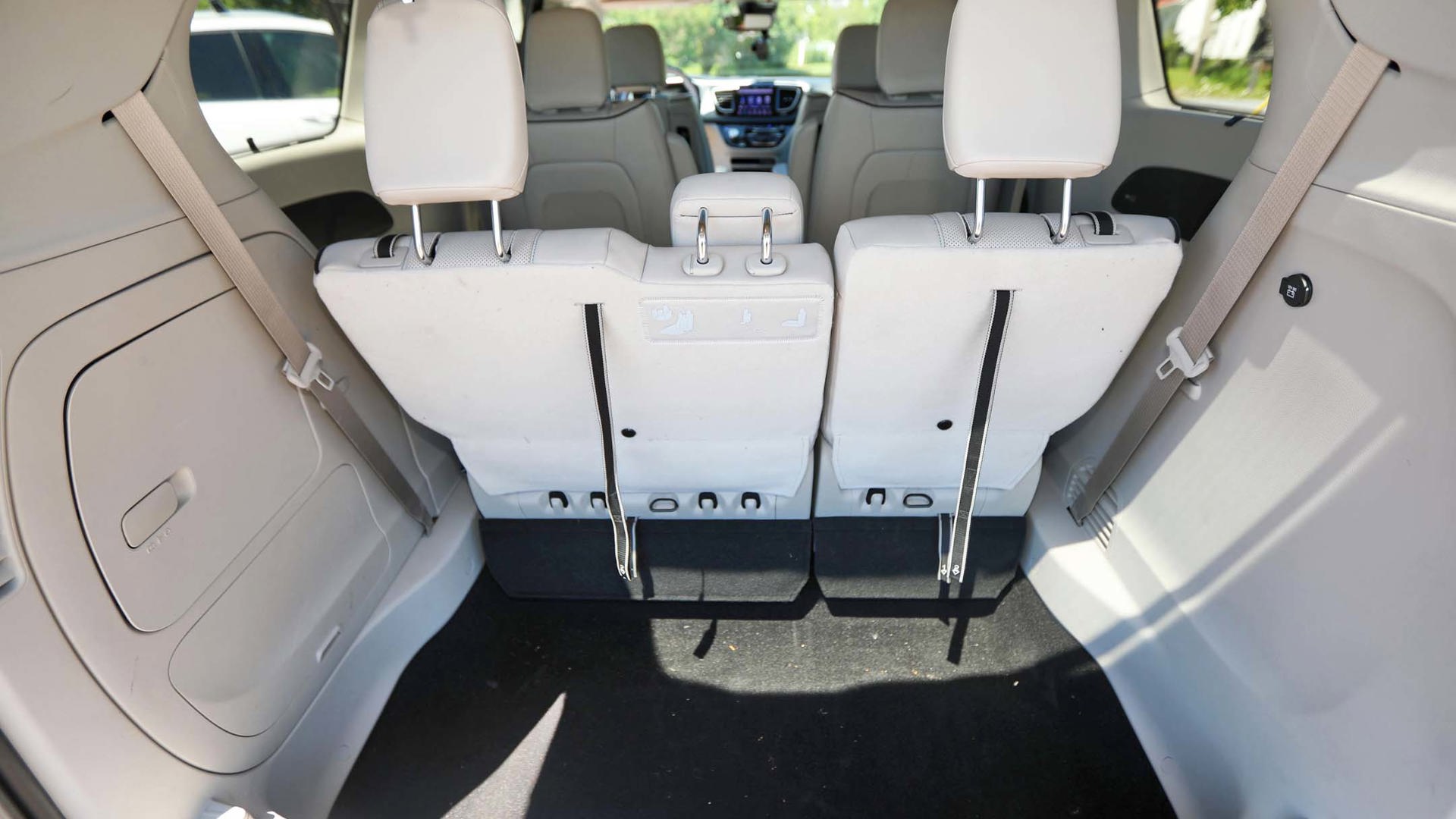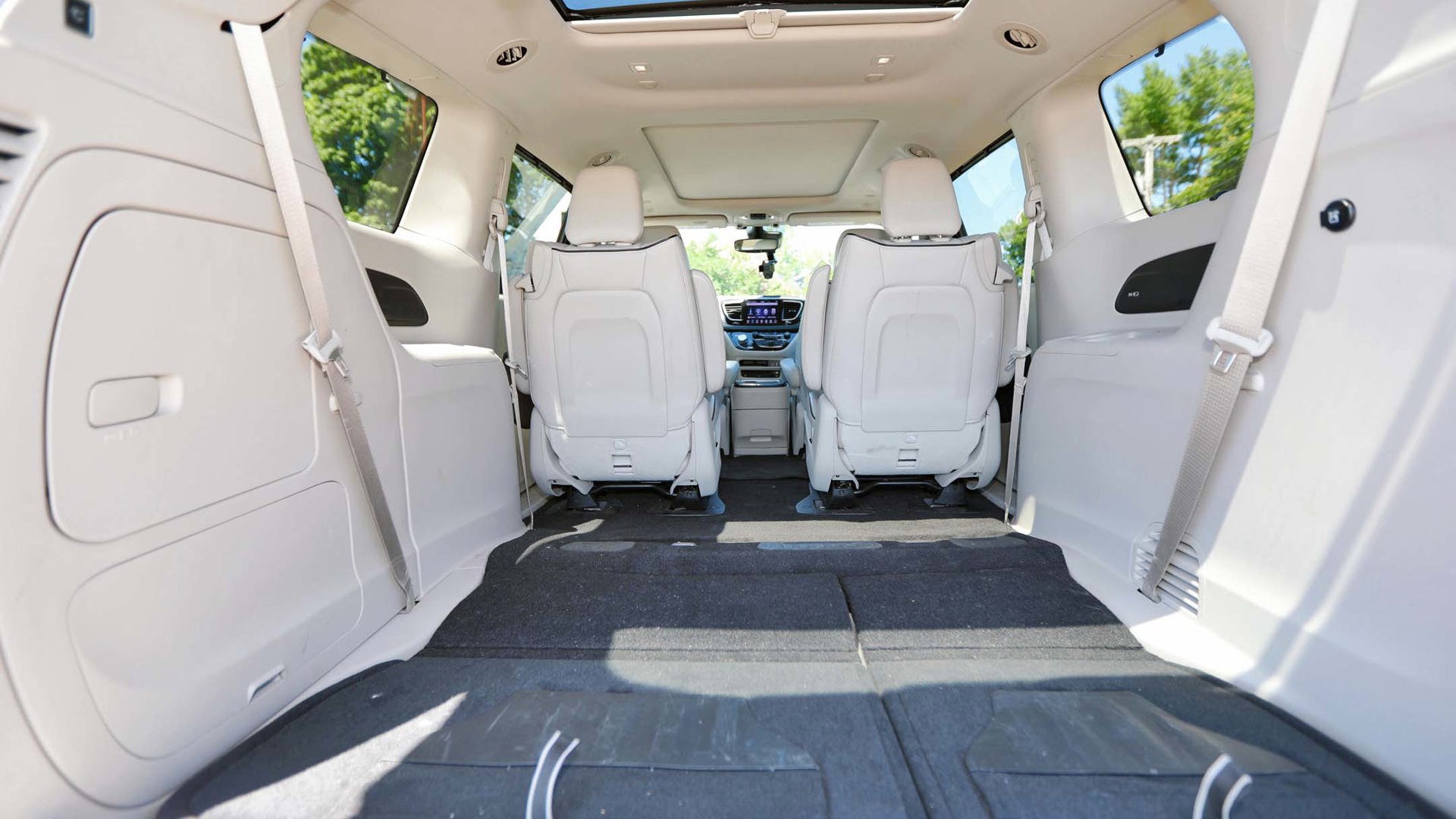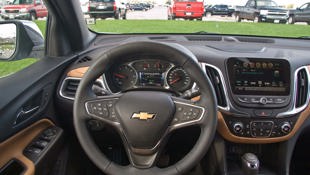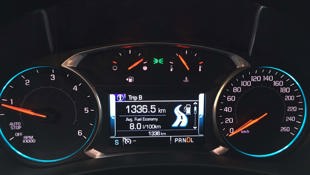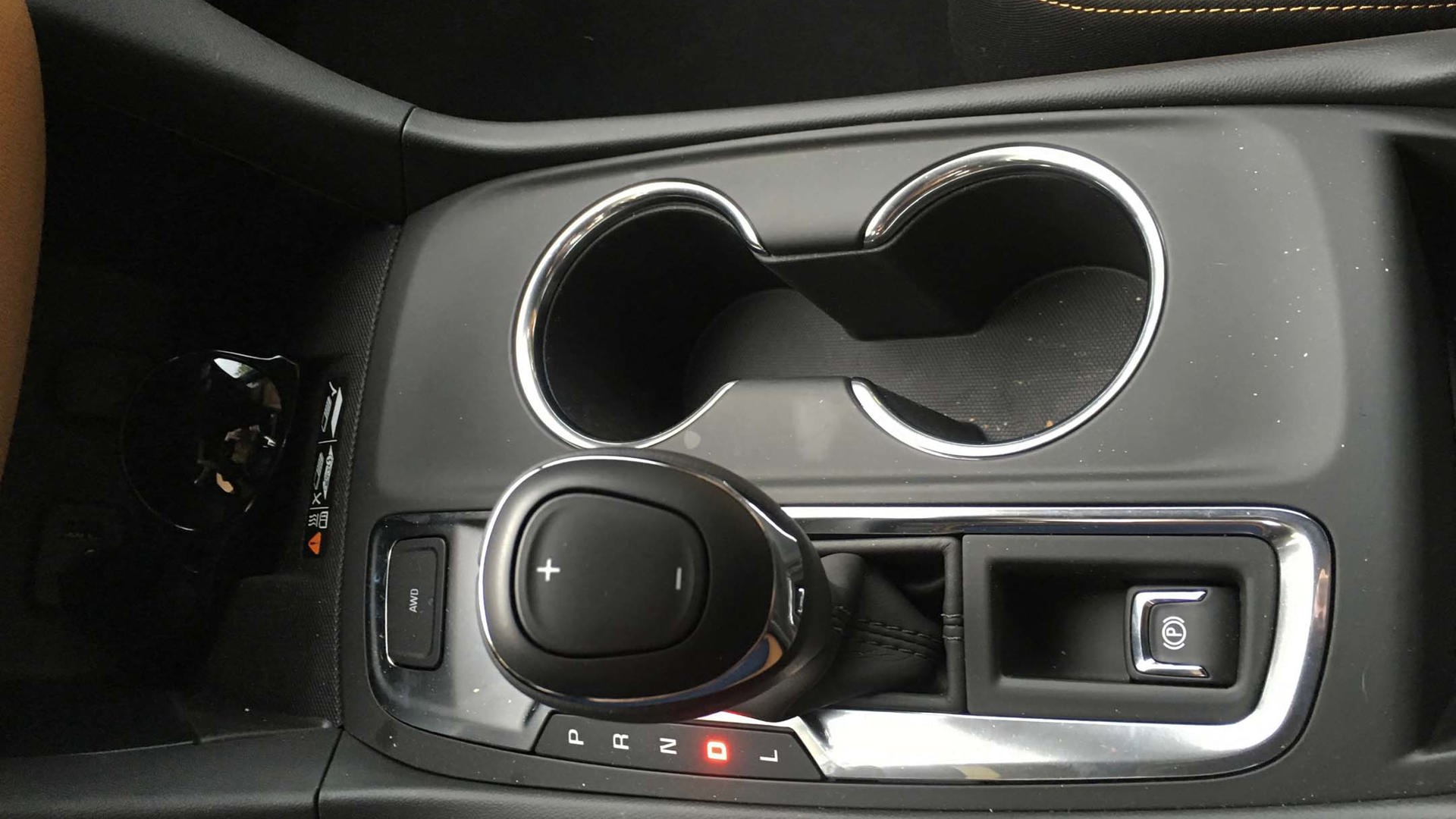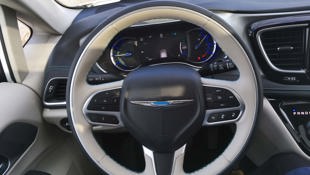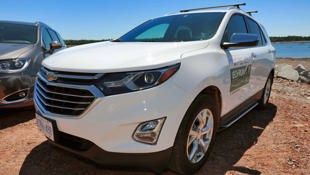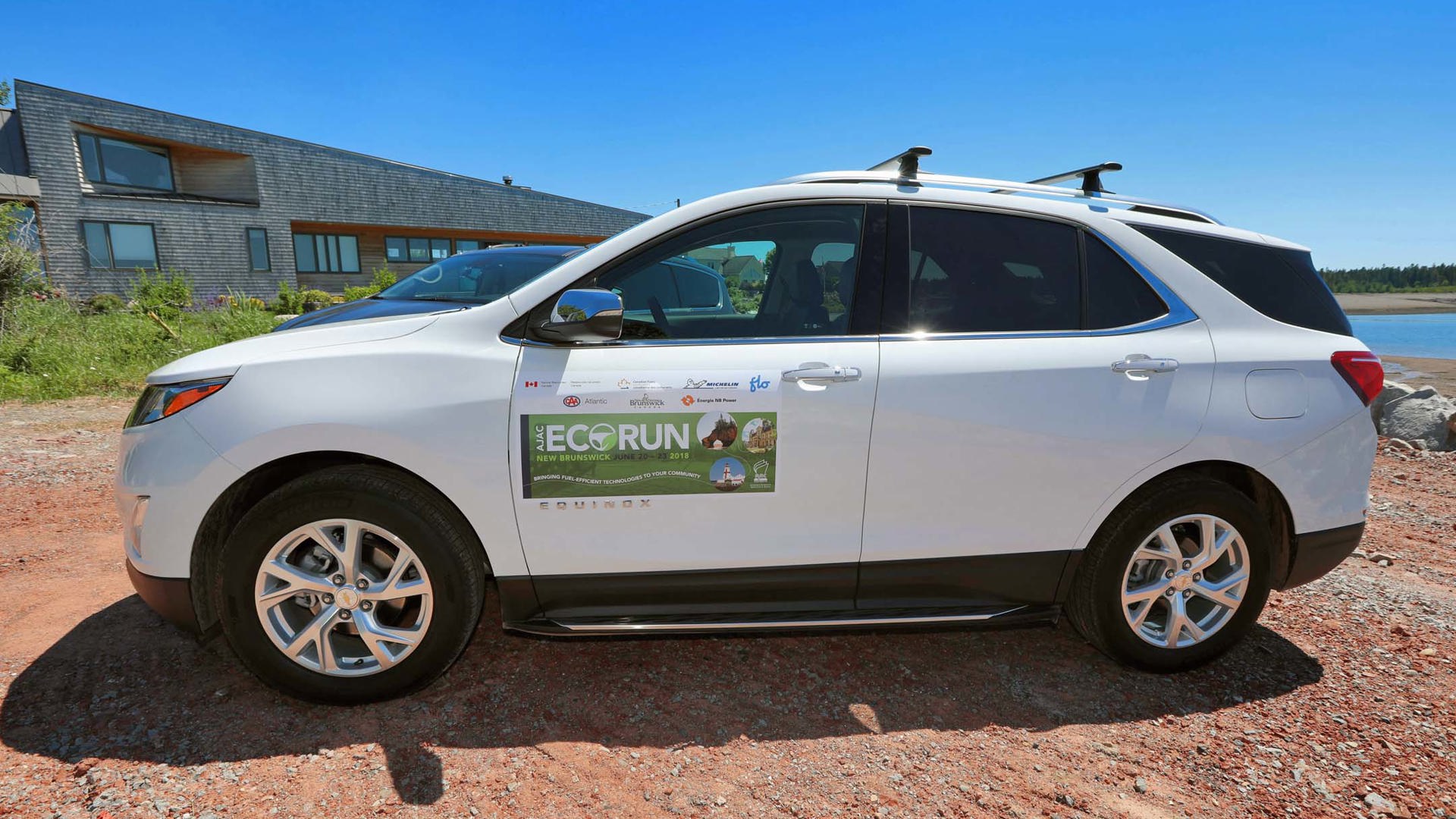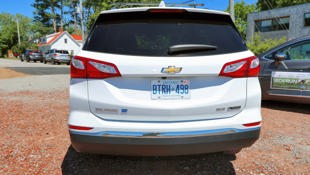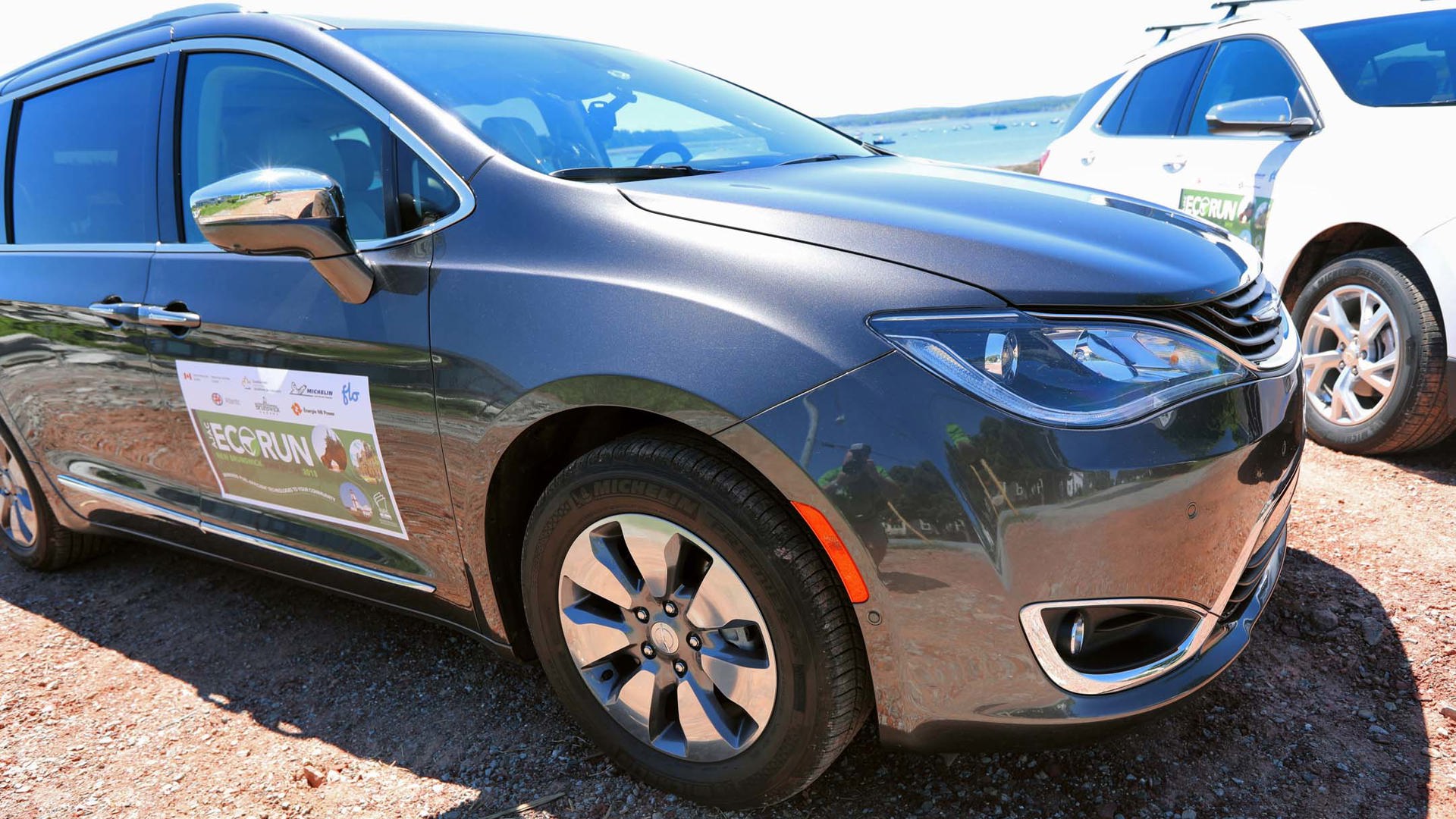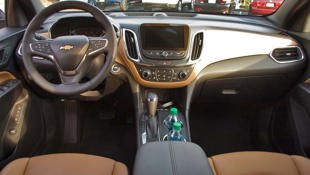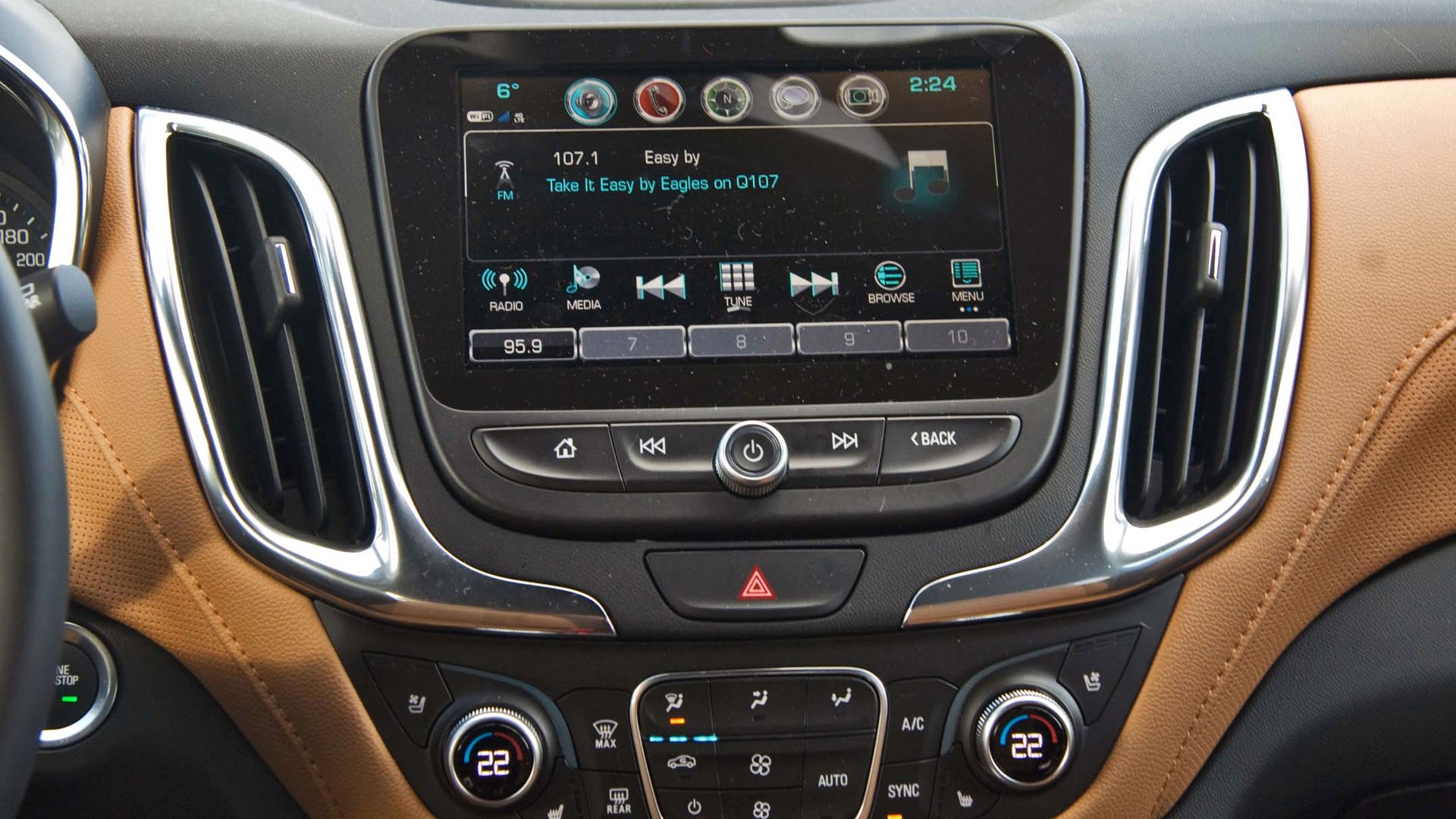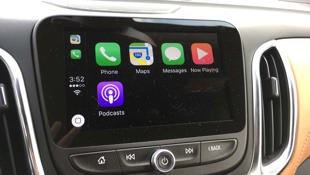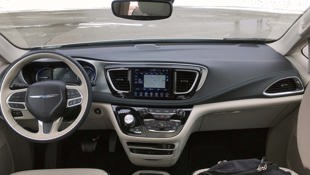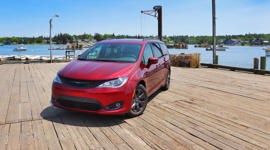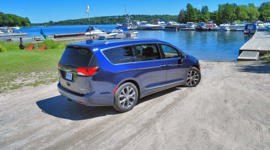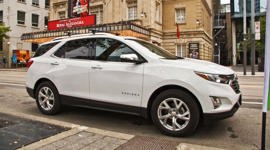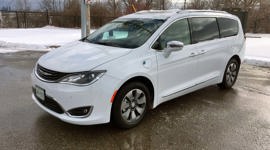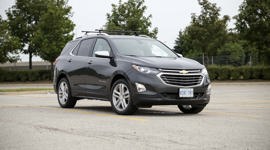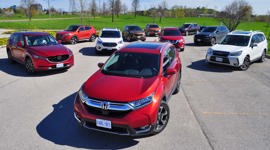Comparison Data
|
2018 Chevrolet Equinox AWD Diesel Premier
|
2018 Chrysler Pacifica Hybrid Limited
|
|---|---|
|
Engine Displacement
1.6L
|
3.6L
|
|
Engine Cylinders
4
|
V6
|
|
Peak Horsepower
137 hp @ 3,750 rpm
|
260 hp
|
|
Peak Torque
240 lb-ft @ 2,000 rpm
|
N/A
|
|
Fuel Economy
8.5/6.1/7.3 L/100 km cty/hwy/cmb
|
7.3/7.2/7.3 L/100 km cty/hwy/cmb
|
|
Cargo Space
846 L
|
914 L
|
|
Base Price
$38,000
|
$56,945
|
|
A/C Tax
$100
|
$100
|
|
Destination Fee
$1,795
|
$1,895
|
|
Price as Tested
$41,265
|
$61,675
|
|
Optional Equipment
$1,370 – Hit the Road Package (roof rack rails, moulded assist steps) $1,370
|
$2,735 – Granite Crystal Paint $245; Panoramic Sunroof $1,695; 18-inch wheels and tires $795
|
The AJAC EcoRun is a great showcase of all sorts of advanced auto tech, from hydrogen power, to EV power and everything in between. That’s all good stuff, but considering we live in a world still dominated by gas- and diesel-powered vehicles, it’s also a great chance to see how far that tech has come.
"For a vehicle this size to get anywhere close to this level of efficiency is impressive."
Case in point: the 2018 Chevrolet Equinox Diesel and 2018 Chrysler Pacifica Hybrid, two very different takes on a pair of very different, yet traditional, family haulers. We took the chance to drive the two back-to-back, curious to see how far these fairly new powertrains move the goalposts when it comes to moving people.
Powertrains
Chevrolet Equinox: 7.5/10
Chrysler Pacifica: 7/10
In one corner, you have the Chevy, which gets a 1.6L turbodiesel four-banger, good for 137 hp and, more importantly, 240 lb-ft of torque. When I first stepped into the Equinox and plipped the starter button, I did jump a little when I heard that telltale diesel rattle. That being said: my windows were down – put them up, and it’s surprisingly peaceful inside the Chevy.
Immediate acceleration is not spectacular, but this being a diesel, it’s the in-gear and at-speed stuff that matters. Highway passing and the like is a breeze with this engine, as it does a good job of giving you that feeling that you’ve got a nice reserve of torque at your disposal. I didn’t come across a single instance during my drive where I felt like I needed more power.
The six-speed auto works well in unison with the engine – you can also shift gears yourself, but the +/- rocker atop the gear lever is awkward. I hardly used it, and I suspect the same will go for most buyers. Plus, there’s always the L slot on the shifter if you feel like you want to have a little more control over things.
It comes as no surprise that the Pacifica is a very different animal, what with its plug-in hybrid powertrain and electronic continuously variable automatic (eCVT) transmission. What’s interesting about this particular test, however, is that I didn’t have any charge to work with, so there was a little more parity between the vehicles than there would have been had I the ability to cruise in full-EV mode.
Instead, I had to make use of the Pacifica’s 3.6L V6 with 260 hp, although even without a charge, the Atkinson-cycle powertrain provides a little EV assistance for the gas engine. The results are unsurprising in that the Pacifica isn’t all that fast, but boy is it ever smooth; I may have been using the gas engine for most of my drive, but its report is so silent that I hardly knew it.
My colleague Stephanie Wallcraft agrees: “Some of the Pacifica’s peace and quiet is thanks to the electric motor, but the transition to the engine is so seamless and quiet as to be nearly imperceptible.”
The reason the Equinox edges the Pacifica here, is a case of the Chrysler being a victim of its own tech, in that I drove for 111.5 km, and yet the EV battery level remained zero the whole time. Unlike other PHEVs, there’s no mode that forces it to focus more on charging the battery, either, so without being able to plug it in, I was out of luck.
Having said that: Stephanie did have a full charge, and managed a straight 70 km on 100 percent EV power, resulting in a 4.4 L/100 km count when her 130 km run was done. That’s impressive stuff for such a large vehicle, though one can imagine what would happen once you cram a four- or five-person family in there.
The Equinox, for its part, fared incredibly well. I saw 5.1 L/100 km during my drive, which is way below what the manufacturer claims for highway driving. Granted, if I’d had my windows open more or leaned more on the A/C that would have changed things, but even when I did keep the windows open for an extended period of time, I saw very little variation.
The Pacifica was no slouch either at 7.0 L/100 km, but for now, the Equinox shows how diesel can still reign supreme on the highway, a sentiment Stephanie echoes, though she saw slightly more fuel usage than I did: “The Equinox Diesel pulled off 5.4 L/100 km. I had to work for that number, but still – for a vehicle this size without a plug to get anywhere close to this level of efficiency is impressive.”
After the EcoRun event, the final fuel economy observed averages (that is, how the vehicles performed in the hands of every driver on the event) were tabulated: The Equinox averaged 5.8 L/100 km on the highway (NRCan reports 6.1 in its testing), while the Pacifica averaged 6.4 L/100 km, also below NRCan’s figure of 7.2/100 km.
Drive experience
Chevrolet Equinox: 6.5/10
Chrysler Pacifica: 8.5/10
Clear win for the Chrysler here.
As mush as I love the torque of the Equinox, the way the Pacifica goes about its business is so darn refined that it’s just too hard not to pick it, especially when comfort is often priority number one for buyers considering vehicles like this.
Somehow, Chrysler has managed to massage the suspension to the point it swallows up bumps like Barney Gumble swallows up pints, but manages to also keep body roll very much in-check. I’m not going to say it drives like a sports car – far from it, obviously – but this is a vehicle I’d have no problem taking on long road trip after long road trip.
That’s not to say that the Equinox is an exercise in ultra-firm, teeth-rattling damping, but you can feel its SUV underpinnings fairly frequently, especially over small, repetitive bumps. It doesn’t get too wallowy over larger undulations, though, which is a boon for those with motion sickness issues. The steering is also a little more direct than what’s on offer from the Chrysler, which gives it a bit of a leg up on sweeping highway bends or when on narrower, more windy roads.
Styling
Chevrolet Equinox: 6.5/10
Chrysler Pacifica: 8/10
Yes, you’re reading that score correctly: I’m choosing a minivan over an SUV in a style competition. Please, let me explain.
For starters, Chevrolet’s current styling language is just so ho-hum to me, halo stuff like the Camaro and Corvette notwithstanding. The front-end treatment is tame – identifiable, as most models share the split grille and headlight lens styling the Equinox gets – but tame. I’ve talked to vehicle designers before who’ve said that SUVs and pickups are some of the toughest vehicles to style, and it appears that affliction is manifest here.
It’s not bad-looking, necessarily, but it doesn’t really move the barometer like a Mazda CX-5 or the upcoming Toyota RAV4 does. Which, of course, will likely be perfectly fine for a large number of buyers, who don’t need their CUVs and SUVs to exhibit flashy styling, as long as they’re comfortable and roomy inside. Chevy will sell a ton of these, regardless of how they look. Oh, and the profile view’s okay, too, providing a somewhat streamlined effect thanks to a couple of subtle creases around the rear doors and quarter panels.
Once upon a time it was the minivan that would fly out of dealerships no matter how it looked; GM made about half a dozen versions of their minivan in the late ’90s and early ’00s, and many of them sold.
Since that time, SUVs have taken over and so it goes that Chrysler had to consider the Pacifica’s styling more so than it had in the past with the likes of the Town & Country and Grand Caravan. The result is a minivan that looks a little more like a very large wagon thanks to a surprisingly long hood with a curved leading edge, with a bit of European flair from the forward-canted D-pillars. They’ve even managed to give it a bit of a chopped-top look, which is surprising considering the minivan digs.
The front end, meanwhile, gets a nice low-profile blacked-out grille and curved headlamp lenses. This is a van that you could even picture getting a bit of a “tuner” treatment as it actually looks… cool.
Interior and storage
Chevrolet Equinox: 7.5/10
Chrysler Pacifica: 9/10
Inside, the theme is kind of the same; Chrysler and the rest of its North American FCA brethren have taken their interior styling and build quality quite seriously as of late, and the results are seen in the Pacifica’s tight panel gaps, slick lighting and high-quality leather finishes.
The Equinox is somewhat less ornate (it also costs about $2,000 less at base), but ours being the Premier Diesel trim means perforated leather surfaces with contrasting stitching, slick 8.0-inch MyLink touchscreen display and leather-wrapped steering wheel. You’ll have to get used to the swath of plastic around the centre console, though.
Storage-wise, you’re always going to get a whole lot more in a minivan, but it’s worth noting that even though the all-new Equinox is almost 120 mm shorter than the older model, interior room hasn’t changed all that much; I also like how nicely flat the rear seats fold. It’s also lighter than its predecessor, hence our ability to get the fuel economy figures we did.
As far as passenger accommodations go: the Pacifica’s third row notwithstanding, I was surprised to find that there’s actually more legroom in the Equinox’s second row than what’s offered by the Pacifica, though the Pacifica does beat the former in terms of second-row headroom. Still, the bottom line is I found the Equinox’s rear seats to be nicely comfortable and supportive, thought the Pacifica’s offerings are just a little more plush.
A little too plush in terms of the front seat, actually. You’ll get a little more support in the Equinox than you will in the Pacifica, and while many will like the Chrysler’s higher seating position, that squishiness got to me a little as the drive continued on.
Overall though, the Equinox was in tough here, and while it stacks up well with its more traditional competition in the form of the Honda CR-V or Nissan Rogue, the Pacifica wins this particular battle.
Infotainment and connectivity
Chevrolet Equinox: 7/10
Chrysler Pacifica: 8.5/10
Both our testers came with full-load connectivity options, meaning support for Apple CarPlay and Android Auto, something Chevrolet has been dealing with for quite awhile and something that Chrysler only just added to its portfolio. Which is good, because what was already a very good system has become even better with the addition of the new apps.
The Equinox gets a nicely sized 8.0-inch screen that’s responsive and well laid-out, though can be tough to reach as it’s spaced fairly far away from the driver. It’s especially a problem if you’re like me, and have long legs that have you sitting further away from the dash. I also experienced an issue with Google Play Music, the system not displaying my playlists, albums, or songs in their entirety. I’ve had this problem in other Chevys before, and it remains the only manufacturer whose models have exhibited this behaviour.
Other features and value
Chevrolet Equinox: 8/10
Chrysler Pacifica: 8.5/10
Well, the Pacifica may look a little better and have better infotainment, but the Equinox has an ace up its sleeve in that it’s available with AWD in both the LT Diesel and Premier trims. It also gets Teen Driver, which is basically an app that lets parents check how far their kid has driven, when they stopped for fuel, their speed, and so on. Those teens probably won’t like it much, but there’s some nice peace of mind there that just may make them think twice about their actions behind the wheel. I can see no problem with that.
The Pacifica gets a rear-seat entertainment system if you so choose (our tester didn’t have it), a feature the Equinox doesn’t get, and one that no one really expects it to.
Since our Pacifica was the Limited model – of the three available, that’s top spec – it comes in at $56,945 before options and taxes, but has an ace up its sleeve of its own: the provincial rebates it qualifies for being a PHEV. So, while the options we had on our tester such as panoramic sunroof, special 18-inch wheels and granite crystal metallic paint push its price to $58,650 before taxes, you get a $5,000 rebate off that price in BC and $8,000 in Quebec since its battery is larger than 15 kWh. Ontario is at $14,000 right now, but with Premier Ford’s new proposal to eliminate this rebate, that could all be changing very soon.
Our Equinox came in at just below 40 grand before taxes and destination charges (there are two diesel trims, however: our Premier Diesel trim starts at $38,000 while the LT Diesel starts at $36,660), including AWD, which adds an additional $2,400 over the front-wheel-drive model. Other standard Premier features include rear cross-traffic alert, blind-spot alert, 8-inch MyLink display, six USB ports, power liftgate, heated and auto-dimming wing mirrors, and dual-zone climate control. That’s a lot of kit for your $38K (our tester’s roof rails and assist steps, meanwhile, added an additional $1,370) and when you factor in that fuel economy we saw, the Equinox diesel is an attractive proposition.
It falls just short in this category, though, as the PHEV rebates you get for the Pacifica are hard to ignore. There is a bit of an asterisk here, though: if the EV rebate does go the way of the dodo in Ontario, then the Equinox along with other non-EV/PHEV CUVs and SUVs will be able to claw back some ground on the likes of the Pacifica and other plug-ins on the value front.
Verdict
Chevrolet Equinox: 43/60
Chrysler Pacifica: 49.5/60
While the Pacifica wins handsomely on points, the goal here is not simply to pit these two against each other. We had set out to see how each powertrain works in a people-moving capacity, and they both do well, though in different ways. You’ll always have more room in the van and it’s slightly more comfortable overall, but there’s no denying the capabilities of the Equinox’s diesel, especially on the fuel economy front. I like this application of small diesel power. It will be interesting to see how far Chevy takes it past the Equinox and Cruze.
On the Pacifica: what a vehicle. It manages to move your family and their wares without looking too much the part, and the usage of the room inside is spot on. I’m especially a fan of the super-slick dash, whose integration of the infotainment screen looks like something you might see in a fashionable electronics store. If you didn’t think minivans still had a place in today’s automotive world, think again.
